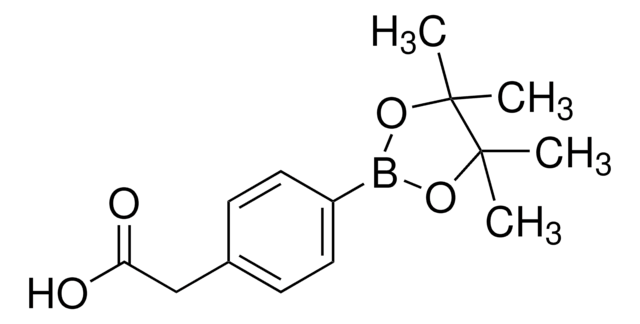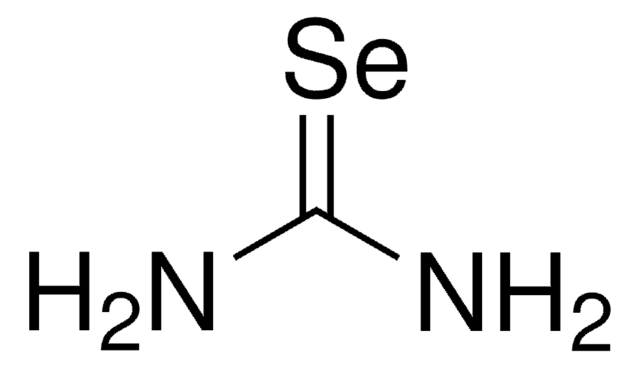S0520
Selenocystamine dihydrochloride
>98% (TLC), suitable for ligand binding assays
Synonym(e):
2,2′-diselenobis-Ethanamine hydrochloride (1:2)
About This Item
Empfohlene Produkte
product name
Selenocystamine dihydrochloride, powder
Assay
>98% (TLC)
Form
powder
Methode(n)
ligand binding assay: suitable
Farbe
yellow to orange
Löslichkeit
H2O: soluble, clear to slightly hazy
SMILES String
NCC[Se][Se]CCN.[H]Cl.[H]Cl
InChI
1S/C4H12N2Se2.ClH/c5-1-3-7-8-4-2-6;/h1-6H2;1H
InChIKey
PKRYDZYGNSZBHO-UHFFFAOYSA-N
Suchen Sie nach ähnlichen Produkten? Aufrufen Leitfaden zum Produktvergleich
Allgemeine Beschreibung
Anwendung
Signalwort
Danger
H-Sätze
Gefahreneinstufungen
Acute Tox. 3 Inhalation - Acute Tox. 3 Oral - Aquatic Acute 1 - Aquatic Chronic 1 - STOT RE 2
Lagerklassenschlüssel
6.1C - Combustible acute toxic Cat.3 / toxic compounds or compounds which causing chronic effects
WGK
WGK 3
Persönliche Schutzausrüstung
Eyeshields, Faceshields, Gloves, type P3 (EN 143) respirator cartridges
Analysenzertifikate (COA)
Suchen Sie nach Analysenzertifikate (COA), indem Sie die Lot-/Chargennummer des Produkts eingeben. Lot- und Chargennummern sind auf dem Produktetikett hinter den Wörtern ‘Lot’ oder ‘Batch’ (Lot oder Charge) zu finden.
Besitzen Sie dieses Produkt bereits?
In der Dokumentenbibliothek finden Sie die Dokumentation zu den Produkten, die Sie kürzlich erworben haben.
Kunden haben sich ebenfalls angesehen
Unser Team von Wissenschaftlern verfügt über Erfahrung in allen Forschungsbereichen einschließlich Life Science, Materialwissenschaften, chemischer Synthese, Chromatographie, Analytik und vielen mehr..
Setzen Sie sich mit dem technischen Dienst in Verbindung.


















